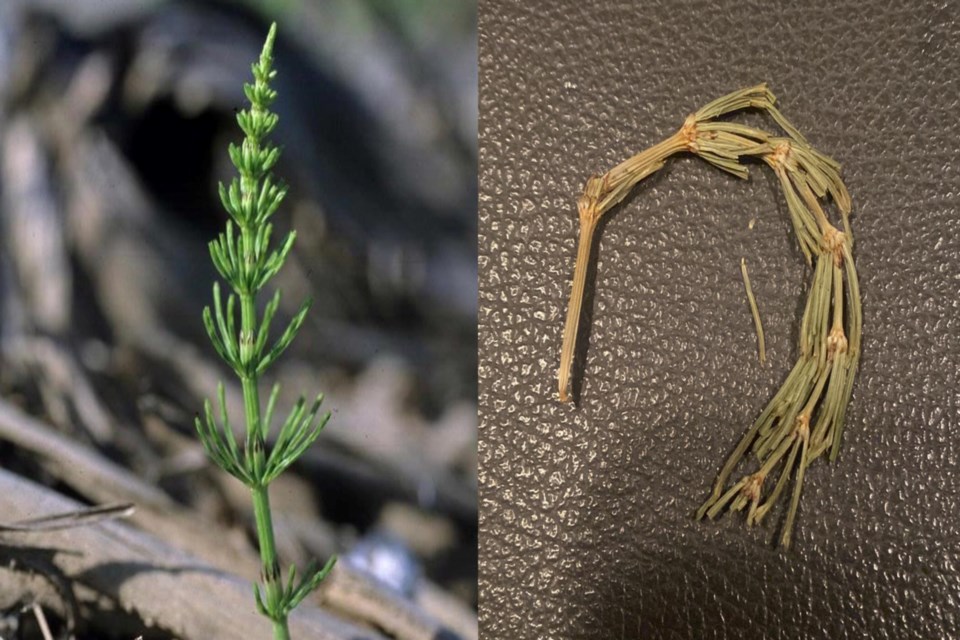ATHABASCA/BARRHEAD/WESTLOCK — A relatively rare occurrence of a dangerous plant being baled into animal feed recently led to the poisoning of a local horse.
The Westlock Veterinary Clinic issued a warning concerning contaminated feed on its Facebook page last week, advising local horse owners to be aware of what they're feeding their animals, after a plant known both as marestail and horsetail led to at least one very sick equine.
Posted to its Facebook page Jan. 23, the clinic noted hay bought from another part of the province contained the plant which can be toxic for horses if ingested in large quantities or over an extended period.
“This feed was located from farther north in Alberta,” said Westlock veterinarian Brenden Hilgart Jan. 28. “However, it is a plant that can grow across North America.”
The symptoms won’t start right away but build up each time the horse eats the plant which usually grows in wet areas but may have been harvested due to the dryer conditions this past summer making marshes and other wetlands accessible to be baled.
“So, it depends on how long they've been on it and how much is in the feed,” said Hilgart. “But the most typical early sign is they might be a little bit lethargic, have a poor hair coat, generally just not looking 100 per cent.”
After that it can present with more neurological symptoms like an unsteady gait and excessive muscle twitching.
“Towards the more severe end of things they can be falling down, collapsing, and even having seizures,” he said.
Also included in the list are depression, weight loss, diarrhea or constipation, and loss of muscular control.
“It needs to be a pretty significant portion of the diet, for horses about 20 per cent of their dry matter intake is needed to have the more serious side effects,” Hilgart said. “However, depending on what their B vitamin or Thiamine level is they can have signs at a lower percentage.”
It also depends on the age, weight and overall health of the horse before consuming the feed as younger or already ill horses may become poisoned faster than healthy horses.
“Younger animals or those that are ill or are not in as good as nutritional condition are much more likely to suffer from this than those that are healthy and have good access to a balanced mineral block as well as good quality feed,” said Hilgart.
The symptoms can also be confused with other things like lead toxicity or high sulphur content in the water supply.
“Salt toxicity, which commonly happens in animals that have been deprived of water,” he said. “Other times of the year it could look similar to West Nile or a couple of the more infectious mosquito-carried diseases.”
Hilgart said narrowing down what is happening starts with a detailed history of when the symptoms started and what changed before they occurred.
“Has there been any feed changes recently? Are the waterers still working? Going through the pen making sure that there's no source of lead,” he said. “And based on all that kind of coming up with a differential and seeing what is most likely.”
The treatment, he said, is benign, B vitamins, specifically Thiamine.
“Depending on how serious the condition is, sometimes steroids to control some inflammation as well.”
He also cautions against diagnosing your horse yourself though, as providing the wrong treatment could endanger your horse further.
“If anyone has a concern about this, they should talk to their veterinarian as soon as possible,” he said. "There are some other conditions that this could look like and while it could very well be this, it could be something else and talking with your veterinarian and coming up with a more specific plan for your scenario would be a benefit.”




